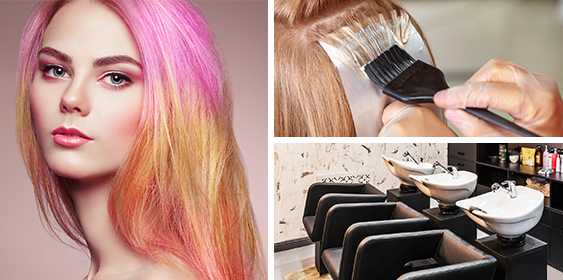Our coverage of the salon hair care market began in the early 1990s, focusing only on the United States. In 2007, it expanded into a global study, and since then each year we’ve been adding new markets and meaningful information to watch out for. The recently completed edition of the Salon Hair Care Global Series, which is currently in publication, analyzes historically the highest number covered till now of 27 key markets across the globe. Let’s take a look at some of the key findings our analysis uncovered.
North America continues to dominate the global salon hair care market; however, growth in the region is going downhill since 2015. Despite a slowdown in growth over the past three years, the region continues to gain share, increasing higher than the global market’s average growth. The United States is the leading market in the region, representing a 91% share of regional sales.
A common approach that is gaining momentum among many U.S. salon hair care brands is the expansion outside salons into alternate channels. With the limited sales growth opportunities offered by salons, other channels, such as cosmetic specialty stores, department stores, and e-commerce platforms have become the new routes that marketers are now exploring for increased exposure and accelerated sales of their products. As the number of players shifting to such channels is on the rise, we explore this topic in our upcoming Professional Hair Care Retailing: Channel Analysis and Opportunities report coming out this autumn.
Europe also continues to grow, but at a much lower rate than in 2016. The growth in this region is mostly driven by the good performance of small yet burgeoning Eastern European markets, like Russia and Turkey. Growth in Western Europe slows down considerably.
The five leading markets in the region—Germany, France, the United Kingdom, Italy, and Russia—collectively represent more than 80% of European regional sales in 2017. While Germany continues to be the leading salon hair care market, Russia registers the highest growth in Europe. Russia’s growth is aided by a dynamic market brimming with innovations, trade events, and digital initiatives backed by continuous support from industry professionals. In Germany, e-commerce is a hot topic, and this is exemplified by the growing number of online platforms which allow the purchase of professional products. While still small in comparison to other channels of distributions, sales through e-commerce have registered double-digit increases in 2017.
Not far behind Europe is Asia with a similar growth pattern. While Japan is the leading market in the region, exceptional double-digit growth is witnessed in India and Vietnam in 2017. The five leading country markets—Japan, India, Taiwan, China, and South Korea—account for approximately 84% of Asian regional sales in 2017. Japan’s 1.3% growth, lower than the average growth of Asia, is supported by the hair coloring category, where consumers seem to prefer bright colors and silvers.
Latin America also gains sales as compared to its dismal performance in 2016. This is primarily due to Brazil, the leading salon hair care market in the region, which posts a minor growth of 0.5% in 2017 as compared to its 10.3% decline in 2016. Brazil’s positive performance is driven by the economy currently showing signs of recovery following the strong recession that began in the second quarter of 2014.
Among the other markets covered in the latest edition of the Salon Hair Care Global Series report, are Australia and South Africa. Bond builders are spot-on in Australia, experiencing a high level of take-home sales. As for South Africa, this edition uncovers the ever-growing ethnic segment, which is strongly driven by the natural movement.
Written by Jiri Michal, Project Manager, Shivani Singh, Project Lead, and Marcela Chifu, Senior Marketing Executive.

